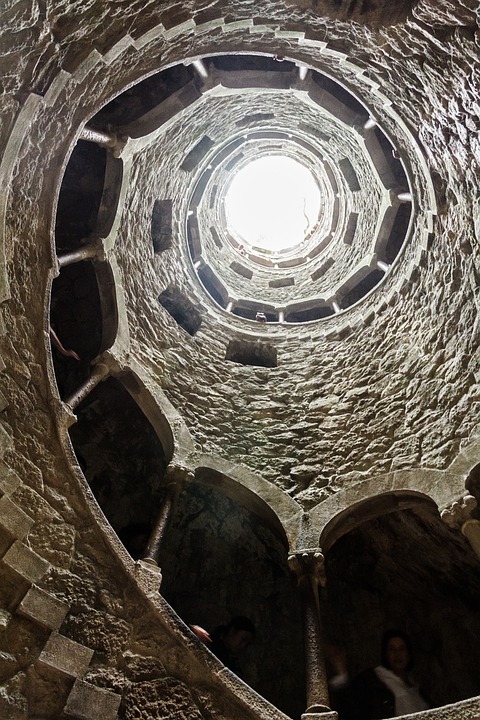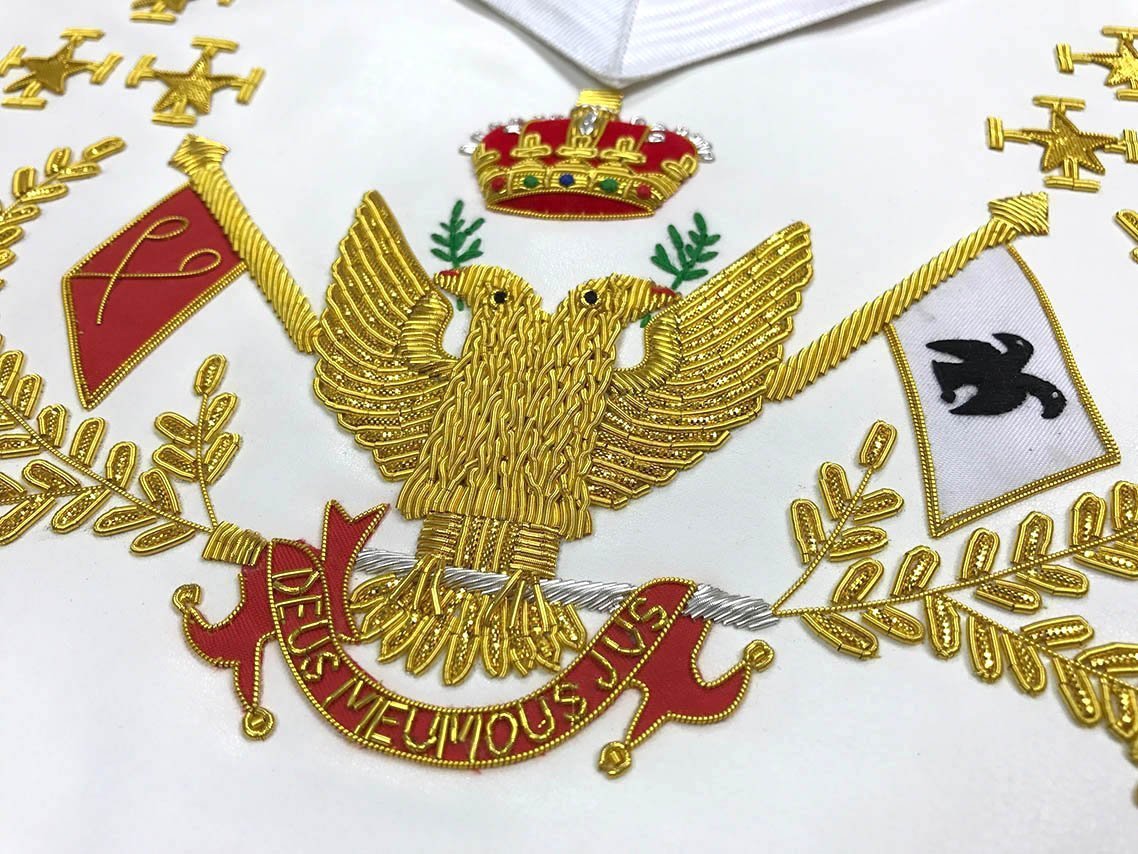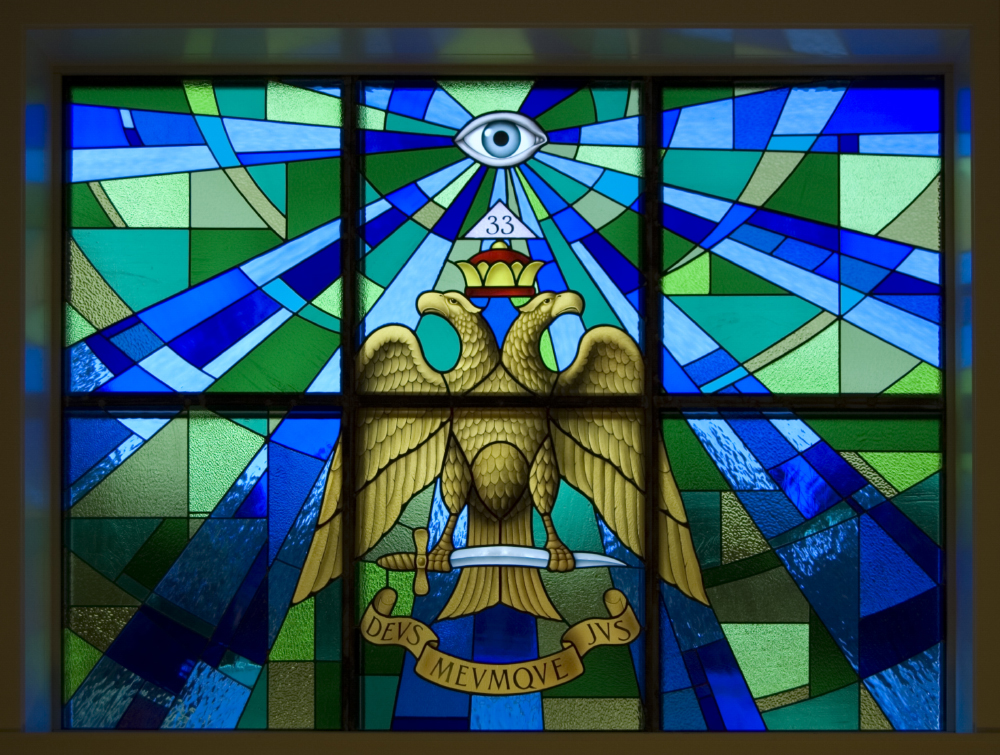
The roots of the Ancient and Accepted Scottish Rite reach far back into the past, and the teachings and symbolism that it contains precede its formal establishment for thousands of years. It is a sum of signs, symbols and records, questions and answers, quests and experiences of many devotees and wise men, who have carved a value system for which it can be said that it became solid like the mountains and permanent like the stars. Its traces are on the tombs and temples of India, on the ruins of Nubia, in the valley of the Nile, in Chaldea, Assyria, Persia, Greece, Rome, even in the ancient and distant Mexico.
The occurrence of the Rite like we know it today leads us to France and the beginning of the XVIII century. During the political turmoils in Scotland in the XVII and XVIII century, the members of the Royal House of Stewart and many Scottish Freemasons left the homeland and escaped to France, which was, with its strong and numerous aristocracy and rich social life, a very convenient ground for the expansion of Freemasonry. That is the time when different rituals and degrees are formed and developed, each of them with its story, symbolism, aim, and morals.
In 1728, the “Rite of Ramsay” (also known in French as “Rit de Bouillon”) appears. It was named after Scottish knight Michael Andrew Ramsay, a man of broad views and exceptional education. Ramsay was known for his sermon in which he pointed out the origins of Freemasonry from the Knights Templar. Charles Radcliffe – Earl of Derwentwater, who was the Grand Master of the Grand Lodge of France from 1736 until 1738, also has great merits for this Rite. Ramsay’s Rite had, besides three symbolic degrees (Apprentice, Fellowcraft, Master Mason) three additional degrees: 4° – The Scots Master (one of the interpretations is that, thanks to this name, the whole Rite later got the name “Scottish”), 5° – The Novice, and 6° – The Knight of the Temple. Ramsay’s system became the basis on which other, higher degrees would be upgraded in the coming years. In France at that time rituals and lodges of higher degrees flourish, especially in Bordeaux and Lyon. It is where for the first time the “Kadosh” degree, one of the crucial in the Ancient and Accepted Scottish Rite was established in 1741.
In 1758, several prominent Freemasons, holders of the so-called “Scottish high degrees”, founded The Sovereign Council of Emperors of the East and West, Sublime Scottish Mother Lodge. The Council adopted the degree of “Knight Kadosh”, and in 1768 the degree of the “Sublime Prince of the Royal Secret”. In this way, the Council has rounded up the Scottish high degrees and included them in the so-called “Rite of Perfection”. It had 25 degrees, of which 22 were called “Higher Degrees”, while the first three belonged to symbolic lodges.

In 1761 the Council of the Emperors of the East and West granted the Patent “Envoy and Grand Inspector” to a merchant from Bordeaux Etienne Morin, giving him authority to establish the Rite of Perfection in the Western Hemisphere (America and the Antilles) as well as the right to upraise Brethren in America to the degree of Grand Inspector and his deputies. Thanks to the diligent work of Morin, the Lodges of Perfection have been established in the Dominican Republic, and thanks to the devotedness of his deputy Henry Andrew Francken, Lodges of Perfection were formed in the American cities: Albany, New Orleans, Philadelphia, and Charleston.
Brother Etienne Moren has supplemented the Ritual of Perfection with another eight new degrees from 1761 to 1768 (some of which he took from the Primitive Scottish Ritual and some he created himself), thus establishing the Ancient and Accepted Scottish Rite of thirty-three degrees. In that form, the Rite has been spreading all over the world since 1786.
The Council of the Emperors of the East and West existed until 1782, after which it disappears without a trace.
On May 1, 1786 the Grand Constitutions of the Ancient and Accepted Scottish Rite were passed in Berlin. They were signed by the King of Prussia, Frederick the Great, in the capacity of the Sovereign Grand Inspector General of the Ancient and Accepted Scottish Rite. These documents define that the Ritual consists of thirty-three degrees, bears the title “Ancient and Accepted Scottish Rite”, and that it is administered by the Supreme Council. In this way, The Supreme Council consisting of Brethren on the 33° was formed for the first time. The Grand Constitutions grant the right to the holders of the thirty-third degree to form other Supreme Councils and upraise other Brothers to the 33°. The rules established by the Grand Constitutions still apply today.
The first Supreme Council on American soil, consisting of eleven members, was inaugurated in the city of Charleston (South Carolina, U.S.A.) on May 31, 1801. One of its founders was Marquis de Grasse-Tilly (Alexandre Francois Auguste de Grasse, Comte de Grasse-Tilly), who was, in 1802, appointed Grand Inspector General and Sovereign Grand Commander of the French West Indies, where he also established the Supreme Council. Upon his return to France in 1804, the Marquis de Grasse-Tilly became The Sovereign Grand Commander of the Supreme Council of France and founded Supreme Councils in Italy (1805), Spain (1809) and Belgium (1817).
Under the protection of the Supreme Council of Italy (1805), which is the third oldest in the world, the work on higher degrees is taking place within the Grand Masonic Lodge of Serbia. In this way our Brethren are expanding their knowledge of the Scottish Rite and Freemasonry.
The present Ancient and Accepted Scottish Rite originates from the further development and intertwining of the various rites of the time. The merits for its shaping as a unique entity from a somewhat chaotic multitude of rituals and manuscripts can be largely attributed to Albert Pike, (1809-1891) the Sovereign Grand Commander of The Southern Jurisdiction (U.S.A.) and an exceptional Masonic thinker and author. Albert Pike served as Sovereign Grand Commander for a full 32 years. His monumental work “Morals and Dogma” is considered the foundation for the study of the Scottish Rite.
In Serbia, on May 9th, 1912 the Supreme Council of the Ancient and Accepted Scottish Rite of the Kingdom of Serbia was established in the valley of the Sava and the Danube, with the Patent of the Supreme Council of Greece. The first Grand Commander of the Supreme Council of the Kingdom of Serbia was the Venerable Brother George Weifert (in Serbian: Djordje Vajfert).

According to the structure of the Ancient and Accepted Scottish Rite, the Grand Lodge has full authority over the first three symbolic degrees (Apprentice, Fellowcraft, Master Mason), while the Supreme Council has authority over the lodges that work on higher degrees. In an organizational sense, they form two sovereign and independent entities. But in a spiritual and philosophical sense, they represent a unity, which shares a common aim: the promotion and nurturing of ethical values, as the true mission of Freemasonry.
It is very important to emphasize that no Rite, not even the Scottish one, can make the man a greater Freemason than his belonging to the symbolic, Blue Lodge. The degrees of the Scottish Rite are only numerically higher than the first, second, and third degree, but they are by no means more important than them. The greatest authority and thinker of the Ancient and Accepted Scottish Rite – Albert Pike said: “Now it may be too late to change the terminology that has become generally accepted, but we must not make a mistake of thinking that a 33° Freemason is for any reason higher than the Master Mason, and especially than the Worshipful Master of the Lodge. All of us who are in the Brotherhood should demonstrate with our words and deeds that the Grand Master, within his Obedience and jurisdiction, is the highest officer and greatest authority that the world has ever seen and will see.”
To conclude: The Ancient and Accepted Scottish Rite is a specific allegorical journey in the form of a drama, a campaign in personal development. Through a system of thirty-three degrees, it conveys important moral and spiritual lessons, and it is one of the two branches of Freemasonry (besides the York Ritual) in which Master Mason can enlarge and improve the knowledge acquired in the first three degrees. Based upon this fact, we can only send the following message to the devoted, loyal, diligent, and ambitious Brothers: The Journey continues…